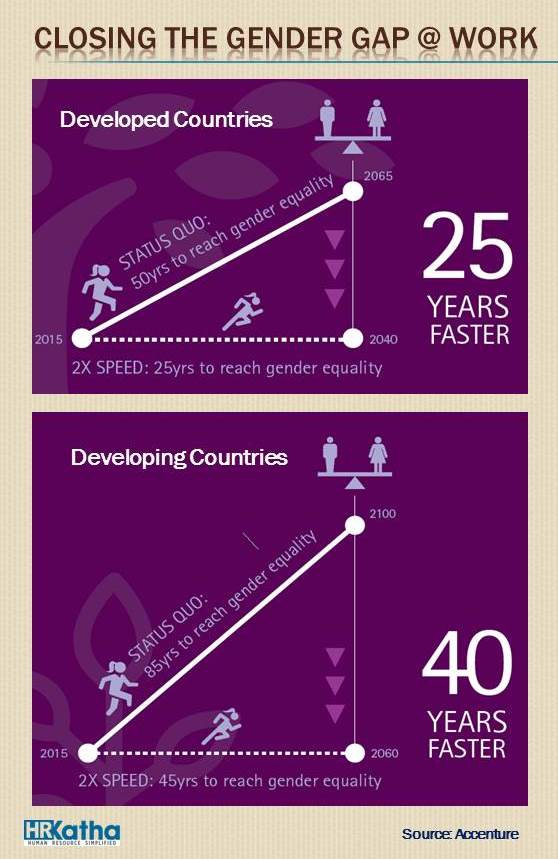In a recent study by Accenture, nearly three-quarters of the respondents – men and women alike – said that “the digital world will empower our daughters”.
Believe it or not, there is a correlation between digital fluency, education, employability and advancement of women. As per Accenture, digital skills will help achieve gender equality at the workplace, at a much faster rate than in the normal course. Different reports have estimated that it would take 100 years to reach gender parity at the workplace.
For instance, developing countries will achieve gender equality at the workplace in 85 years, but a two-fold increase in digital fluency among women can make this happen in 45 years. Similarly, in developed markets, gender equality at the workplace can be achieved in 25 years instead of the normal 50.
It is a known fact that while work-life balance can bring more women to the workplace, digital skills can help improve work-life balance.
Around 50 per cent of the men and women surveyed in India by the Accenture study–Getting to Equal: How Digital is Helping Close the Gender Gap at Work–agreed that digital fluency provides a better balance between personal and professional lives. It results in better time management and productivity.
Besides, digital fluency also allows women to work from home and find work more efficiently. It enables greater work flexibility — an amenity that workers value and companies are increasingly providing.
The study is a result of an online survey conducted–in December, 2015 and January, 2016– of more than 4,900 working women and men in 31 countries. The sample has equal representation of both sexes, representing three generations (Millennials, Gen X and Baby Boomers) across all workforce levels from companies of varying sizes.
Digital fluency also impacts the education of women in a positive way in developing countries, such as India. Around 68 per cent of women respondents from developing countries opined that the Internet was important to their education.
 However, India has still to catch up when it comes to digital fluency and its impact on education, employment and advancement of women at work. In fact, India is at the bottom of the list of 31 countries surveyed. These low scores are affecting women’s progress in employment. India also has one of the largest gaps in the overall score between men and women. Saudi Arabia and UAE are the only countries where these gaps are greater.
However, India has still to catch up when it comes to digital fluency and its impact on education, employment and advancement of women at work. In fact, India is at the bottom of the list of 31 countries surveyed. These low scores are affecting women’s progress in employment. India also has one of the largest gaps in the overall score between men and women. Saudi Arabia and UAE are the only countries where these gaps are greater.
The study reveals that the US has the highest overall score, with the gender gap being one of the smallest. However, it still has far to go to achieve genuine equality at the workplace. The study states that digital fluency has helped American women make significant progress in education, employment and advancement.
Japan measures very low equality between men and women. Japanese men outscore women in all metrics, including education. Japan’s advancement scores are among the lowest as per the study.
While increased digital fluency will help shrink some of these inequalities, it’s clear that Japan, as a nation, will need to address long-standing cultural beliefs and practices before it can truly maximise its female talent.
Interestingly, nearly three-quarters of men and women believed that the digital world will empower their daughters. Clearly, the changes in women’s lives, as a result of digital fluency, are here to stay and will become more pronounced with future generations.



